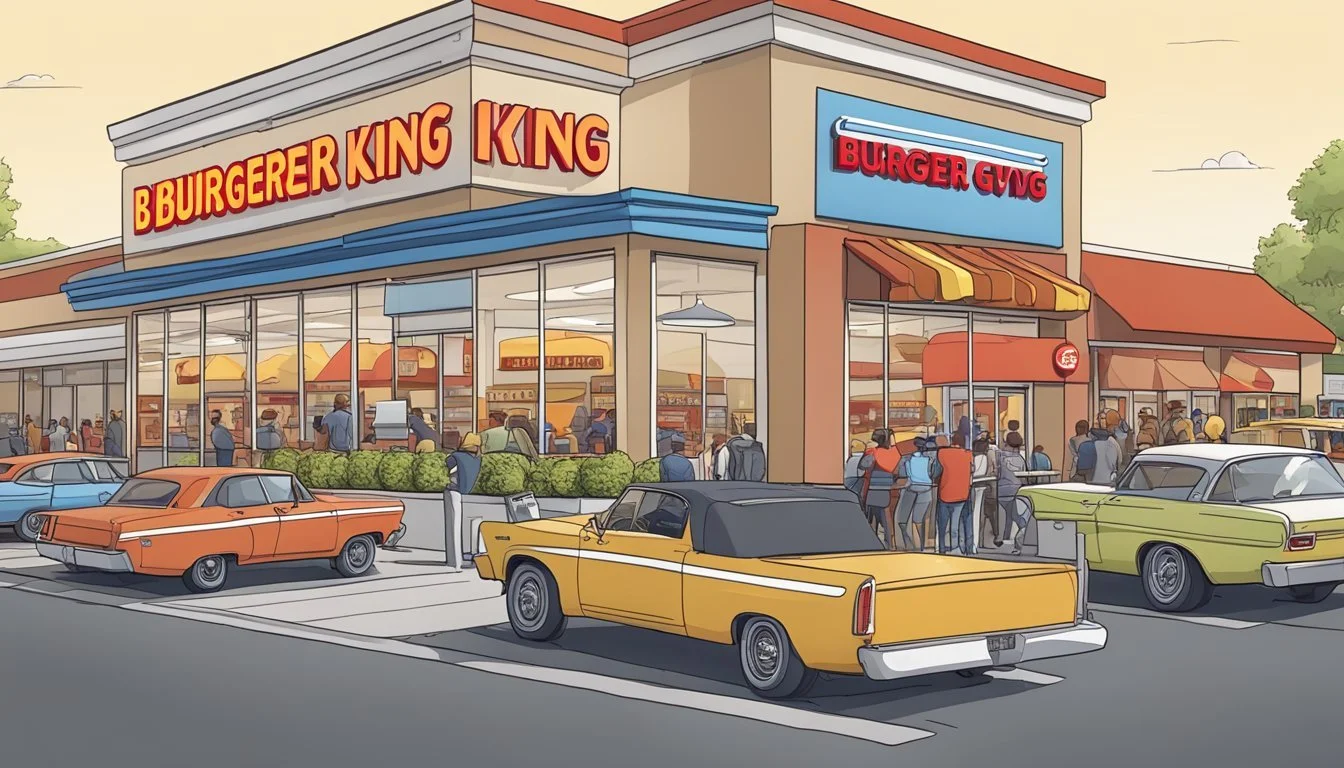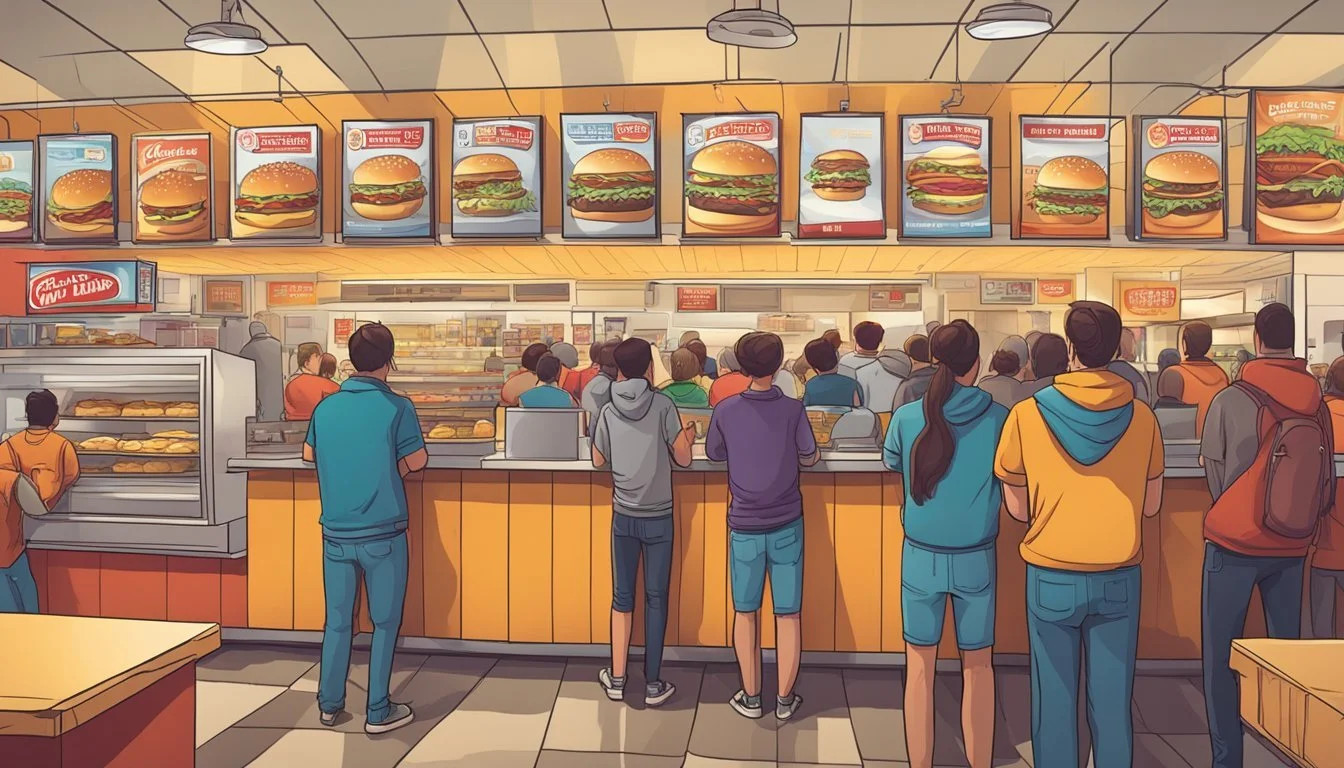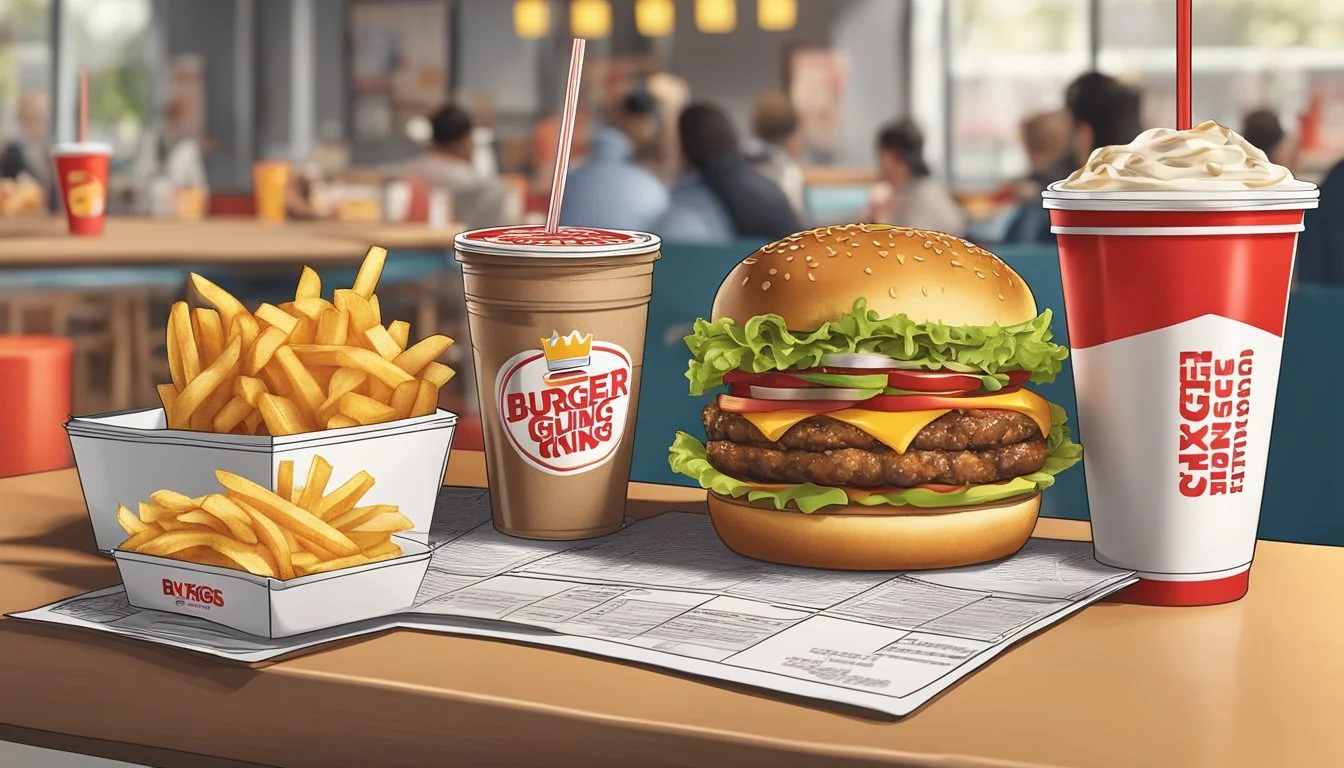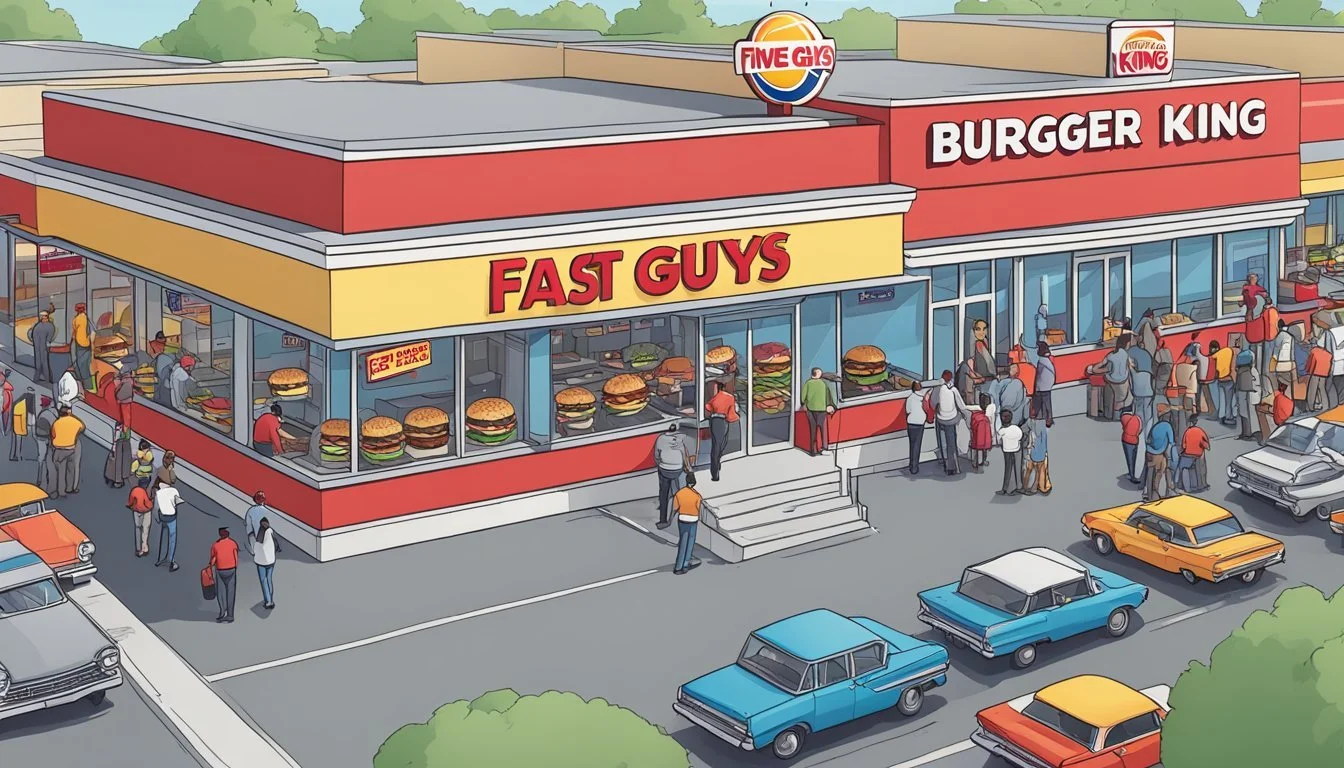Burger King vs Five Guys
A Comprehensive Comparison of Burger Empires
The ever-evolving landscape of fast-food necessitates a critical look at the offerings of prominent burger chains. Two giants that stand out in the meaty fray are Burger King and Five Guys, both of whom have amassed a dedicated following with their unique approaches to the classic American burger. Burger King, a global fast-food titan, is known for its flame-grilled burgers and offers a convenient and budget-friendly option with a broad menu. Five Guys, on the other hand, takes pride in its fresh, made-to-order burgers with a wide array of toppings, catering to a more customized dining experience.
Critiques and comparisons often highlight the differences in quality, value, and taste between the two chains. While Five Guys boasts the use of fresh ground beef and a generous helping of fries, Burger King draws in customers with its signature Whopper and time-tested flavors that have established its place in the fast-food industry. The debate between the fanbases of both establishments is fueled not only by the products themselves but also by factors such as cost efficiency, serving size, and overall dining experience.
Determining which burger joint is superior hinges on a multitude of factors, including individual preferences for taste, ingredients, portions, and the importance of dining ambiance. The comparison between Burger King and Five Guys reveals an industry rich with options, reflecting varied consumer desires and expectations. As such, the contention over which reigns supreme in the world of burgers continues to spark discussions among fast-food enthusiasts.
History and Brand Evolution
The story of how Burger King and Five Guys each carved out a niche in the fast-food industry speaks to their unique branding and growth strategies as they evolved from singular storefronts to global entities.
Origins of Burger King
Burger King was established in 1954 in Jacksonville, Florida, by James McLamore and David Edgerton. They saw the potential in the fast-food market and created a model that emphasized speed, affordability, and consistent quality. With the invention of the Flame Broiler, Burger King could offer a unique flavor profile for their burgers, including the now-iconic Whopper, introduced in 1957.
The Rise of Five Guys
Five Guys started as a family-owned operation in Arlington, Virginia, in 1986, founded by Jerry and Janie Murrell. Their focus on high-quality, freshly made burgers and fries served in a clean and friendly environment quickly became their trademark. The business took a pivotal turn in 2003 when they decided to franchise the concept, leading to significant expansion. By offering a simple menu and placing an emphasis on fresher ingredients, Five Guys distinguished itself in the “better burger” niche of fast-casual dining.
Menu Offerings
When comparing Burger King and Five Guys, the menu offerings present a view into the diversity and quality of fast food burgers each brand provides.
Burger King's Menu Selection
Burger King boasts a wide array of fast food options, with its cornerstone being the Whopper. The Whopper is the quintessential Burger King item, a flame-grilled hamburger topped with lettuce, tomato, mayonnaise, ketchup, pickles, and onions on a sesame seed bun. Beyond the classic Whopper, the menu includes a variety of hamburgers, cheeseburgers, and specialty sandwiches such as the Bacon King and the BBQ Bacon Whopper. Here's a short glimpse into Burger King's menu:
Classic Hamburger: A simple grilled burger patty on a sesame seed bun with pickles, ketchup, and mustard.
Cheeseburger: Featuring the addition of a slice of cheese to the classic hamburger's makeup.
Bacon Cheeseburger: An upgrade that includes crispy bacon atop the standard cheeseburger.
Specialty Burgers: Include various toppings and sauces, often available for a limited time.
Five Guys' Menu Selection
Five Guys' menu, on the other hand, is centered around customizability. Their burgers are made to order with a variety of toppings to choose from. The Five Guys Cheeseburger features two beef patties with an assortment of toppings like grilled mushrooms, jalapeños, and green peppers, allowing customers to tailor their burger to their tastes. Patrons can also benefit from in-house offerings like in-house fresh-cut fries served with a generous helping of ketchup. Below highlights some of their burger selections:
Hamburger: Hand-formed patties with any combination of fresh toppings.
Cheeseburger: With two slices of American cheese added to their signature hamburger.
Bacon Burger: Includes crisp, savory bacon along with the choice of free toppings.
Bacon Cheeseburger: Combines the appeal of bacon with melted American cheese.
Every sandwich at Five Guys is made fresh to order and boasts a rich texture and robust taste, served on a soft, warm bun.
Quality and Taste
When it comes to evaluating the quality and taste of burgers from Burger King and Five Guys, one must consider the distinct flavors and ingredients each brand offers, and how they strive to satisfy the taste preferences of their customers.
The Signature Flavors of Burger King
Burger King has established its reputation on the flame-grilled flavor of its burgers, particularly the Whopper. The charred texture and smokiness imparted by their grilling method provide a unique taste that's often highlighted as the chain's defining trait. In addition to the grilled flavor, Burger King utilizes a range of condiments like mayonnaise and mustard to complement the umami and juiciness of its beef patties.
Five Guys' Approach to Taste
Conversely, Five Guys champions the concept of customizability with a promise of freshness. Customers have the liberty to choose from a variety of toppings, such as grilled onions and an array of condiments, which significantly elevates the flavor profile of their burgers. The texture of Five Guys' burgers is also noteworthy; they feature two patties that are cooked to order, ensuring a juicy interior with a slightly crisp exterior. The taste experience is further personalized with the addition of toppings like lettuce, pickles, and jalapeños, which adds layers of flavor and texture to every burger they serve.
Customer Experience
The customer experience at Burger King and Five Guys is shaped significantly by the dining atmosphere and the speed and efficiency of service. While both are considered fast-food restaurants, Five Guys tends to lean towards a more casual dining feel.
Dining Atmosphere
Burger King: Often recognized for its thematic indoor play areas, Burger King caters to a family-friendly vibe. The seating arrangement is standard for fast-food with a focus on convenience and fast turnaround, mirroring competitors like McDonald’s and Wendy’s.
Five Guys: Five Guys offers a more casual restaurant ambiance with an open kitchen design, allowing customers to see their food being prepared. This aligns closer to other casual restaurants like In-N-Out and Shake Shack, offering a slightly more premium feel compared to the traditional fast-food setup found at White Castle or A&W.
Service Speed and Efficiency
Burger King: Known for the speedy drive-through services, Burger King emphasizes quick service, especially at peak hours. With the introduction of the Burger King digital app, service efficiency has improved, reducing wait times.
Five Guys: Although not typically as quick as traditional fast-food chains like Chick-fil-A or McDonald’s, Five Guys focuses on cooking to order, which ensures fresh food but with a slightly longer preparation time. The efficiency of service here is balanced with the customization options available to customers.
Nutritional Considerations
When comparing Burger King and Five Guys, one important factor to consider is the nutritional content of their signature food items, particularly their burgers. The focus here is predominantly on the caloric content and the implications it has on health.
Calorie Content and Healthiness
Burger King's staple hamburger stands at 241 calories without additional toppings or condiments. In contrast, a Five Guys burger, based on a survey without additional toppings, starts with a base calorie count of around 670 calories. The difference largely comes from the size and the number of patties used, with Five Guys typically offering two beef patties compared to Burger King's single patty option.
Burger King (Hamburger)
Calories: 241
Five Guys (Cheeseburger)
Calories: 837*
Burgers can vary greatly in terms of calorie content based on the customer's choice of toppings and customization. At Burger King, one has the option to keep the calorie count lower by choosing the smaller hamburger. At Five Guys, patrons have the freedom to add a variety of toppings, which can quickly escalate the calorie content beyond its base value.
*Note: The specific calorie count for Five Guys may vary based on the choice of additional toppings and the inclusion of cheese.
Price and Value
In assessing the price and value offered by Burger King and Five Guys, one must consider both the cost at face value and the perceived satisfaction one gets from their offerings.
Cost Comparison
Burger King often provides a less expensive option with a range of price points catering to budget-conscious consumers. Their menu includes:
Value meals (burger, fries, drink) typically under $5
Promotions such as 2 for $5 deals
Five Guys, on the other hand, markets itself as a premium fast-casual restaurant with prices reflecting this position:
Standard burger prices start around $7
Fries costing approximately $3
A direct comparison might look like:
Item Burger King Five Guys Basic Burger $1 - $4 $7+ Fries $1 - $2 $3 Value Meal Under $5 Not explicitly offered, but combination can exceed $10
Perceived Value
The perceived value depends on customer preferences and expectations. Burger King appeals to those seeking traditional fast food at a lower cost and convenience. In contrast, Five Guys is perceived as providing a higher-quality burger, customizable with a wide selection of toppings and famously generous with their portions of fries, suggesting a value that justifies the higher price point for some consumers.
Extra Offerings
Beyond the primary menu items, Burger King and Five Guys offer additional features that enhance the customer experience. These range from a variety of unique options at Burger King to the complimentary add-ons provided by Five Guys.
Burger King's Unique Features
Burger King sets itself apart with limited-time offerings and meal deals that often include new or specialty items. They also have a selection of sides, such as mozzarella sticks and jalapeño poppers, which vary by location and season. Burger King's inclusion of crinkle-cut fries in some markets provides an alternative texture for customers looking to switch from the traditional fry.
Five Guys' Complementary Add-ons
Five Guys emphasizes customer choice through its array of free toppings. Guests can personalize their burgers with options including grilled mushrooms, jalapeños, and various sauces at no extra cost. Moreover, their fries, known for their crunchy exterior and sizable portions, often come as a gratuitous heap in the bag, adding value to the meal.
Tables and charts comparing and contrasting specific offerings were intentionally omitted in adherence to the provided directions.
Brand Presence
When comparing Burger King and Five Guys, it is essential to consider their brand presence, which encompasses their advertising strategies and global outreach.
Advertising Strategies
Burger King implements a mix of traditional and creative marketing approaches. They often leverage humor and pop culture references, allowing them to stay relevant and relatable. Campaigns like "The Subservient Chicken" and "Whopper Detour" are examples of their innovative tactics aimed at creating a buzz. In contrast, Five Guys tends to rely more on word-of-mouth marketing and customer experience rather than high-profile campaigns, resting on the laurels of their product quality to enhance brand value.
Burger King: TV commercials, Social media campaigns, Partnership deals (e.g., with Popeyes, another chain in their corporate portfolio)
Five Guys: Fewer media advertisements, Focus on food quality and customer satisfaction
Global Footprint
Burger King boasts a vast global footprint with over 17,000 locations worldwide, which ranks them among the largest fast-food chains alongside McDonald's and KFC. Their presence spans across numerous countries, catering to a wide range of tastes with region-specific menu items.
Burger King: Presence in 100+ countries (Comparison: McDonald's, similar scope; Wendy's and Dairy Queen, slightly smaller scale)
Five Guys: Approximately 1,500 locations, primarily in North America but growing internationally (Comparison: Whataburger and Fatburger, more regional)
In examining their reach, Five Guys is not as pervasive as Burger King but shows steady growth, aiming to close the gap with strategic international expansions.
Customer Loyalty and Satisfaction
In comparing Burger King and Five Guys, consumer feedback reveals a significant divergence in customer satisfaction and loyalty. This section examines their reputations among consumers and their loyalty program offerings.
Reputation Among Consumers
Five Guys generally receives high customer satisfaction scores, which is indicative of their strong reputation among consumers. For example, in customer satisfaction surveys, Five Guys has outperformed many of its competitors, including Burger King. However, it's important to note that higher prices at Five Guys can affect consumer perception, particularly when compared to more cost-effective options like Burger King. Burger King, being a more established and widespread chain, has not reached the same level of customer satisfaction as Five Guys but maintains a dedicated customer base due to its competitive pricing and accessibility.
Loyalty Programs and Rewards
Burger King offers a loyalty program known as BK Crown Program, where customers can earn points or 'crowns' for every purchase, which can then be redeemed for free food and discounts. This program is designed to encourage repeat visits and build loyalty among customers.
Five Guys does not have a formal loyalty program, but it relies on its high-quality, customizable burgers and positive word-of-mouth to retain customers. While the absence of a rewards program could be seen as a drawback, the consistency in food quality and service at Five Guys encourages repeat business without the need for a points-based incentive.
Conclusion
When evaluating Burger King versus Five Guys, customers should consider their personal preferences for taste, variety, and dining experience. Five Guys prides itself on customizability and quality, offering a wide range of free toppings and a "cooked to order" approach for their burgers. Their fries often receive praise for their generous portions and distinct, almost home-style quality.
Burger King, on the other hand, is renowned for its flame-grilled method, contributing to a unique flavor profile. Their menu includes a broader array of options, including the plant-based Impossible Whopper, which caters to vegetarians and flexitarians alike. As a global chain, they offer familiarity and consistent taste across locations, which can be a comforting factor for many consumers.
Pricing can be a deciding factor, with Five Guys generally positioned as a more premium offering. Burger King, with a more traditional fast-food pricing strategy, can appeal to budget-conscious diners. The dining experience differs as well, with Five Guys leaning more toward an upscale fast-casual atmosphere compared to Burger King's quick-service model.
In terms of health-conscious options, both chains provide alternatives like lettuce-wrapped burgers. Nonetheless, a preference for lower-calorie options might edge a customer towards Burger King's Impossible Whopper.
When choosing between these two burger joints, individuals must weigh their desire for customization and premium ingredients against the need for a varied menu and cost-effectiveness. Their choice will ultimately reflect their personal tastes and the value they place on certain aspects of the fast-food dining experience.







